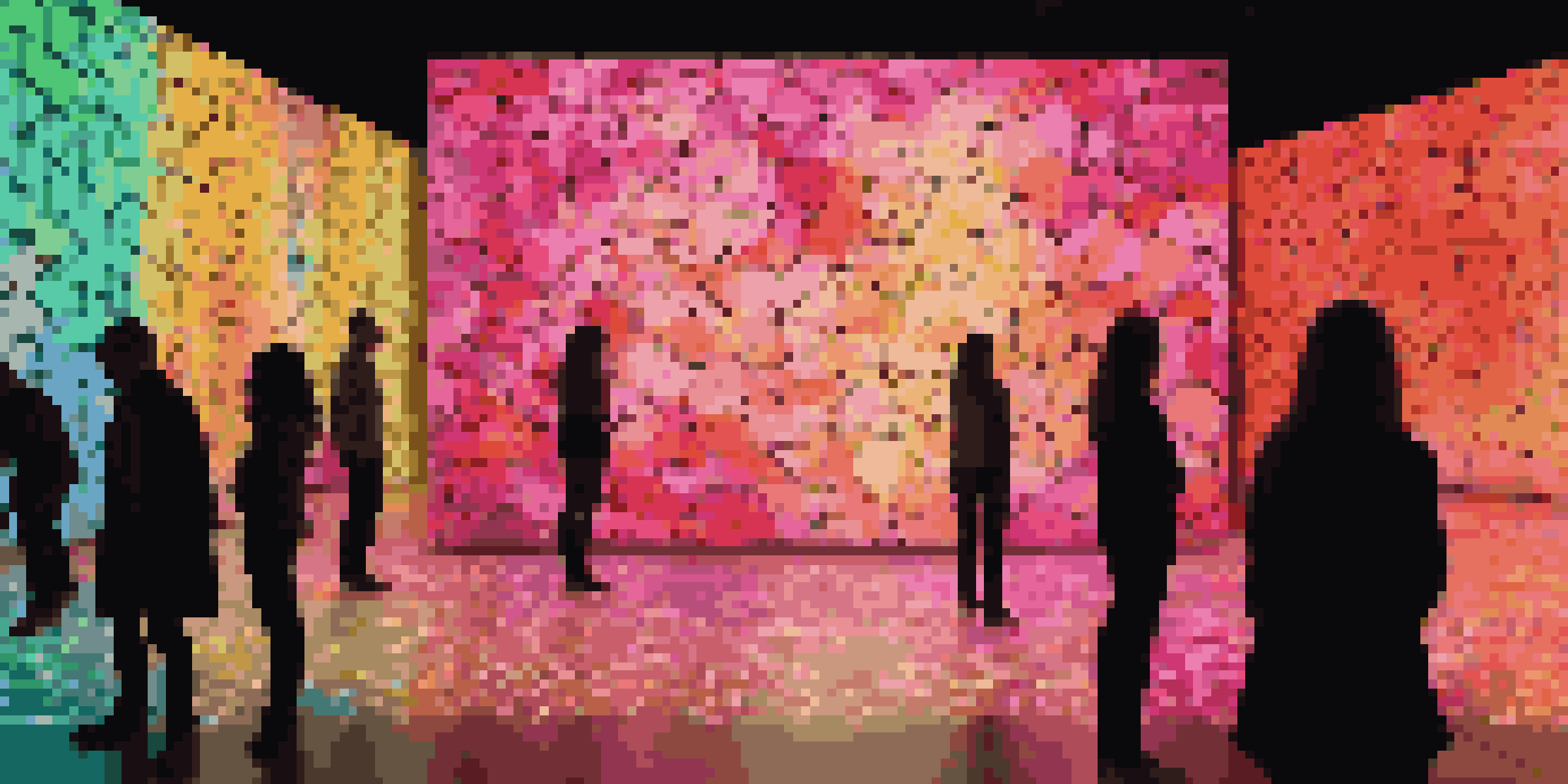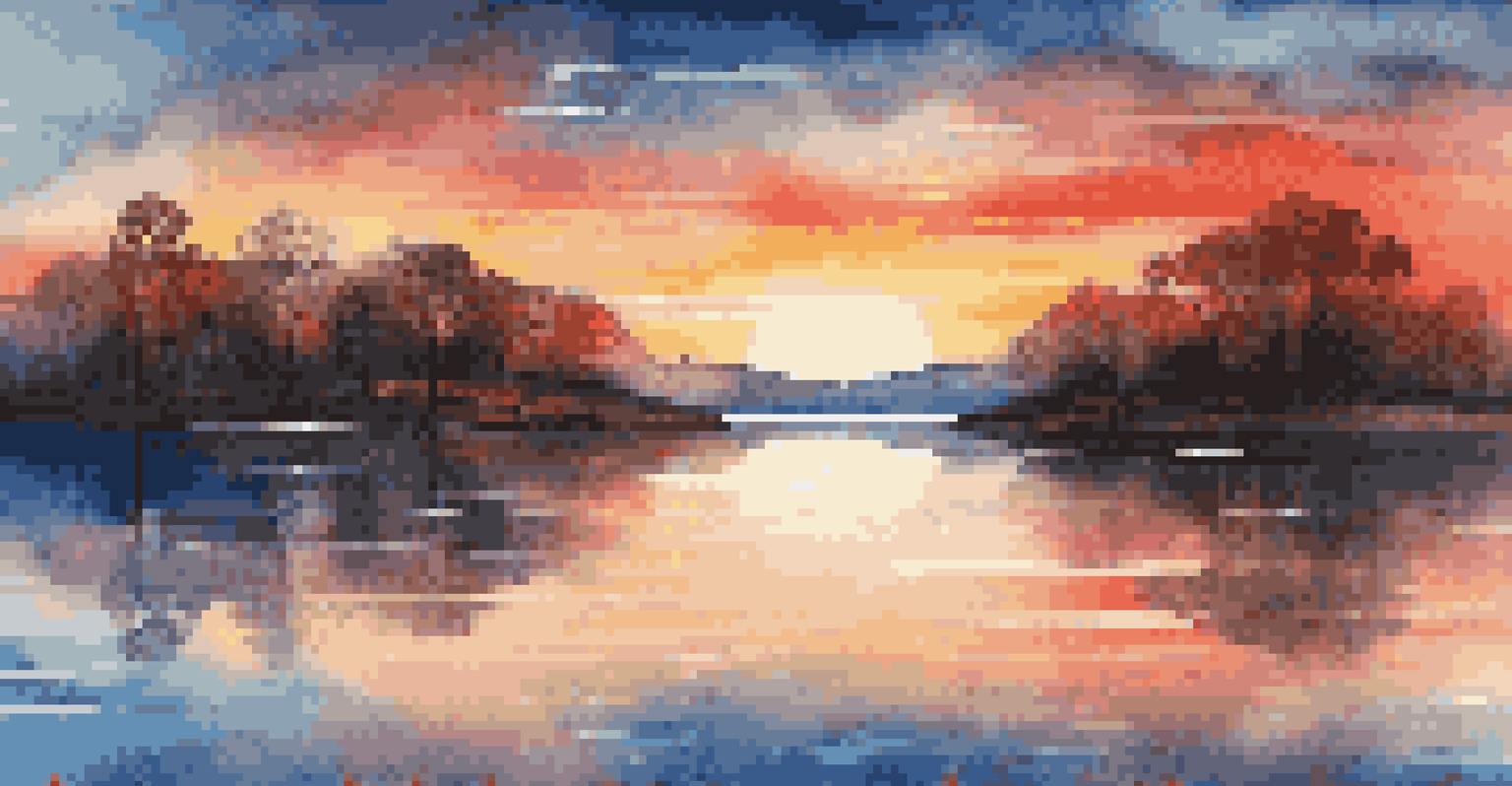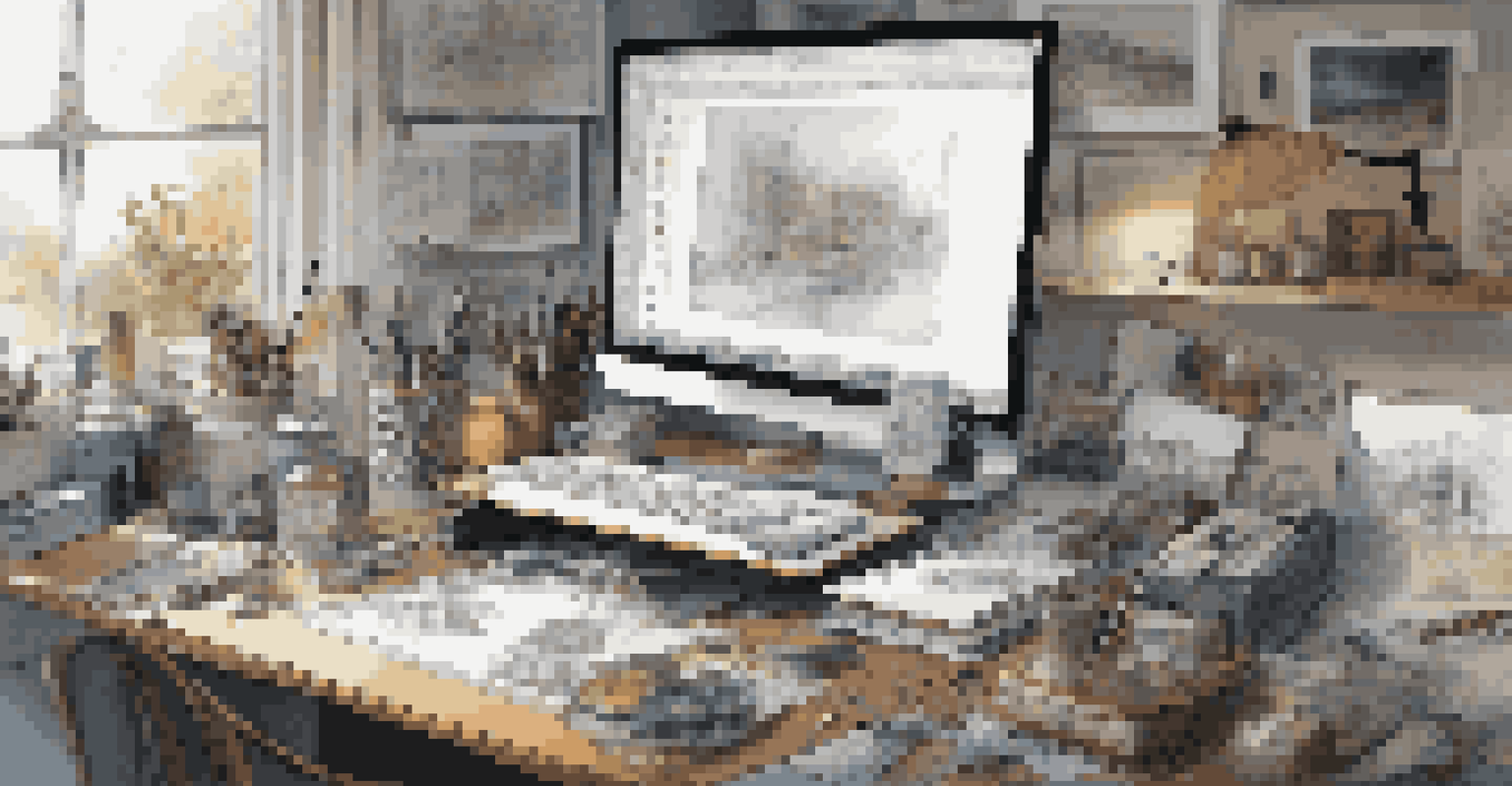Art in the Age of Algorithms: Creativity and Computation

Understanding Algorithms and Their Role in Art
Algorithms are step-by-step procedures used to solve problems or perform tasks, and they are increasingly finding their way into the art world. Artists are leveraging these computational tools to explore new forms of creativity that were previously unimaginable. For example, generative art uses algorithms to create unique pieces that evolve and change with each interaction. This fusion of technology and creativity raises intriguing questions about authorship and originality.
Art is not freedom from discipline, but disciplined freedom.
By employing algorithms, artists can produce works that are not just static but dynamic, responding to inputs or changing over time. This capability allows for a level of interactivity that traditional art forms often lack. Consider a digital installation where viewers' movements influence the artwork on screen—this immersive experience blurs the lines between creator and audience, making the viewer an integral part of the art.
As algorithms play a greater role in art creation, they challenge our conventional ideas about what art is and who gets to create it. This evolution invites us to rethink our relationship with both technology and creativity, suggesting that the future of art may involve collaboration between humans and machines.
The Impact of AI on Artistic Expression
Artificial Intelligence (AI) is a powerful subset of algorithms that has begun to revolutionize artistic expression. AI tools can analyze vast amounts of data, learning styles and techniques from countless artists throughout history. This means that an AI can generate original pieces that mimic the styles of renowned painters or even create entirely new genres of art. An example is the AI-generated portrait 'Edmond de Belamy,' which sold for an astonishing $432,500 at auction.

However, the introduction of AI into the art scene is not without controversy. Some argue that AI lacks the emotional depth and context that human artists bring to their work. For instance, while an AI can produce a stunning visual piece, it may not convey the same personal story or cultural significance as a work created by a human. This debate highlights the importance of human experience in the creative process.
Algorithms Transform Artistic Creation
Artists are using algorithms to create dynamic, interactive art that challenges traditional notions of authorship and creativity.
As we navigate this intersection of AI and art, it’s essential to consider how these technologies can enhance rather than replace human creativity. The collaboration between artists and AI can lead to innovative outcomes, pushing the boundaries of what art can be and how it can be experienced.
Exploring Generative Art: A New Artistic Frontier
Generative art is a fascinating movement where artists use algorithms as their creative partners. By setting parameters and rules for the algorithm to follow, artists can create intricate patterns, shapes, and designs that are often unpredictable and unique. This process transforms the artist from a creator to a curator of a system, allowing for a rich exploration of randomness and structure. A well-known example is the work of Casey Reas, co-founder of Processing, who uses code to generate visually arresting pieces.
The future belongs to those who believe in the beauty of their dreams.
One of the exciting aspects of generative art is its reliance on chance. Unlike traditional art forms, where the artist has complete control over the outcome, generative art introduces an element of unpredictability. This can lead to unexpected and serendipitous results, inviting viewers to engage with the art on a deeper level. The surprise factor often serves as a conversation starter, prompting discussions about the nature of creativity and authorship.
As generative art continues to gain traction, it raises important questions about the role of the artist in a tech-dominated landscape. Are artists merely facilitators of a creative process, or do they still hold the reins of creativity? This ongoing dialogue underscores the evolving nature of art in our algorithm-driven world.
The Ethical Implications of Algorithmic Art
With the rise of algorithmic and AI-generated art comes a host of ethical considerations. Who owns the rights to a piece created by an AI? Is it the programmer, the artist who initiated the process, or the AI itself? These questions challenge our traditional notions of copyright and ownership in the art world. The case of 'Edmond de Belamy' sparked debates about whether an AI-generated work can truly be considered original.
Moreover, the potential for bias in algorithms raises concerns about representation in art. If the data used to train an AI reflects existing biases, the art it produces may inadvertently perpetuate stereotypes or marginalize certain voices. This highlights the importance of diverse input in algorithmic training to ensure that the resulting art is inclusive and representative of a broader spectrum of experiences.
AI Redefines Artistic Boundaries
Artificial Intelligence is revolutionizing art by generating original pieces that mimic human styles, sparking debates over emotional depth and authenticity.
Ultimately, as we embrace the intersection of art and algorithms, it's crucial to cultivate a mindful approach to these ethical dilemmas. By fostering conversations around authorship, ownership, and bias, we can navigate the complexities of this new artistic landscape with intention and care.
The Role of Data in Modern Artistic Practices
In the age of algorithms, data has become a vital ingredient in the creative process. Artists are now using data sets—ranging from social media interactions to environmental statistics—to inform their work. This practice not only adds layers of meaning to art but also connects it to real-world issues and experiences. For instance, artist Ryoji Ikeda uses data from scientific sources to create audiovisual installations that explore the beauty of information.
By incorporating data, artists can make their work more relevant and engaging to contemporary audiences. This approach allows for a blend of art and activism, as artists can visually represent pressing social issues, such as climate change or inequality. The resulting works serve as powerful commentaries, prompting viewers to reflect on their own relationship with the data that shapes our lives.
As we move forward, the integration of data into art will likely continue to evolve. Artists will find innovative ways to harness this resource, creating works that not only captivate but also educate and inspire action.
Art as a Reflection of Technological Advancement
Art has always mirrored the society in which it exists, and the rise of algorithms is no exception. Today, artists are exploring themes of technology, surveillance, and the impact of digital culture on our lives. This reflection can be seen in works that critique the very systems we rely on, pushing audiences to confront uncomfortable truths about our relationship with technology. For instance, Jenny Holzer’s text-based installations often highlight the tension between personal privacy and public exposure in the digital age.
Moreover, artists are using technology not just as a subject but as a medium itself. Digital art forms, such as virtual reality (VR) and augmented reality (AR), offer immersive experiences that challenge our perceptions of space and reality. These technologies invite viewers to step into the artwork, blurring the lines between the physical and digital realms. This evolution of art encourages us to rethink our definitions and expectations of what art can encompass.
Data Drives Modern Art Practices
Incorporating data into art allows artists to address real-world issues and engage audiences in meaningful ways.
As we continue to innovate in our technological pursuits, the art world will likely respond with creativity that reflects our ever-changing landscape. The dialogue between art and technology will deepen, offering new insights and perspectives on the human experience in the digital age.
The Future of Art in a Tech-Driven World
As we look ahead, the future of art will undoubtedly be shaped by technology and algorithms, presenting both exciting opportunities and complex challenges. Artists will continue to experiment with new tools and platforms, pushing the boundaries of creativity in ways we've yet to imagine. The potential for collaboration between human artists and AI opens doors to innovative forms of expression, inviting diverse voices into the conversation. This collaborative spirit could lead to a new renaissance in art, where technology and creativity coalesce.
However, as we embrace these advancements, it’s vital to remain grounded in the ethical considerations we've discussed. Ensuring that the art world remains inclusive and representative will be crucial as we navigate this new terrain. The dialogue around authorship, ownership, and bias must continue to evolve alongside our technological capabilities, fostering a culture of responsibility and mindfulness.

In conclusion, the age of algorithms is not merely a challenge for artists; it is an invitation to explore, innovate, and redefine what art means in a digital era. By embracing these changes, we can look forward to a future where creativity thrives alongside technology, enriching our cultural landscape for generations to come.